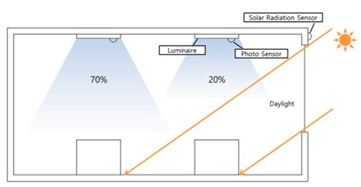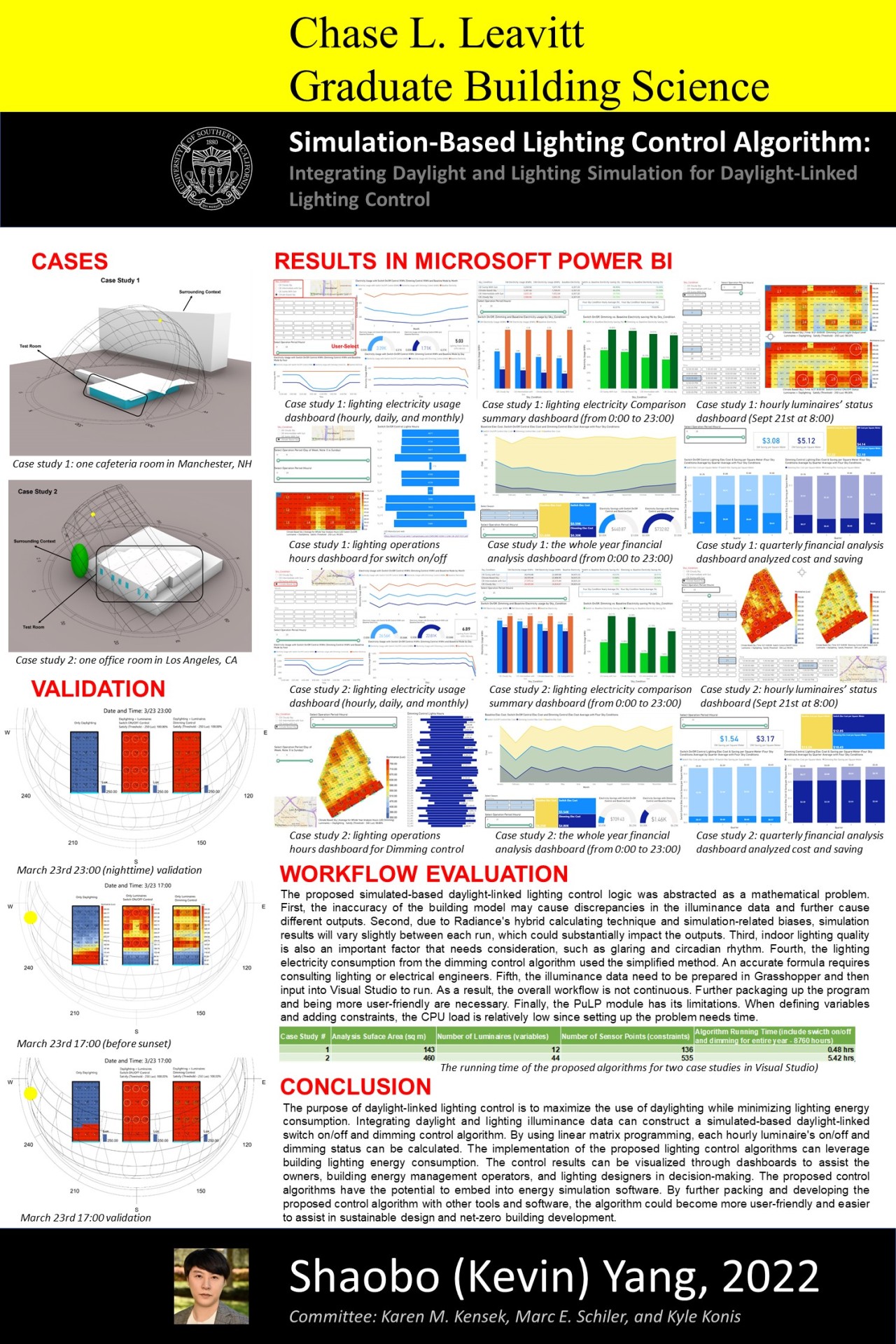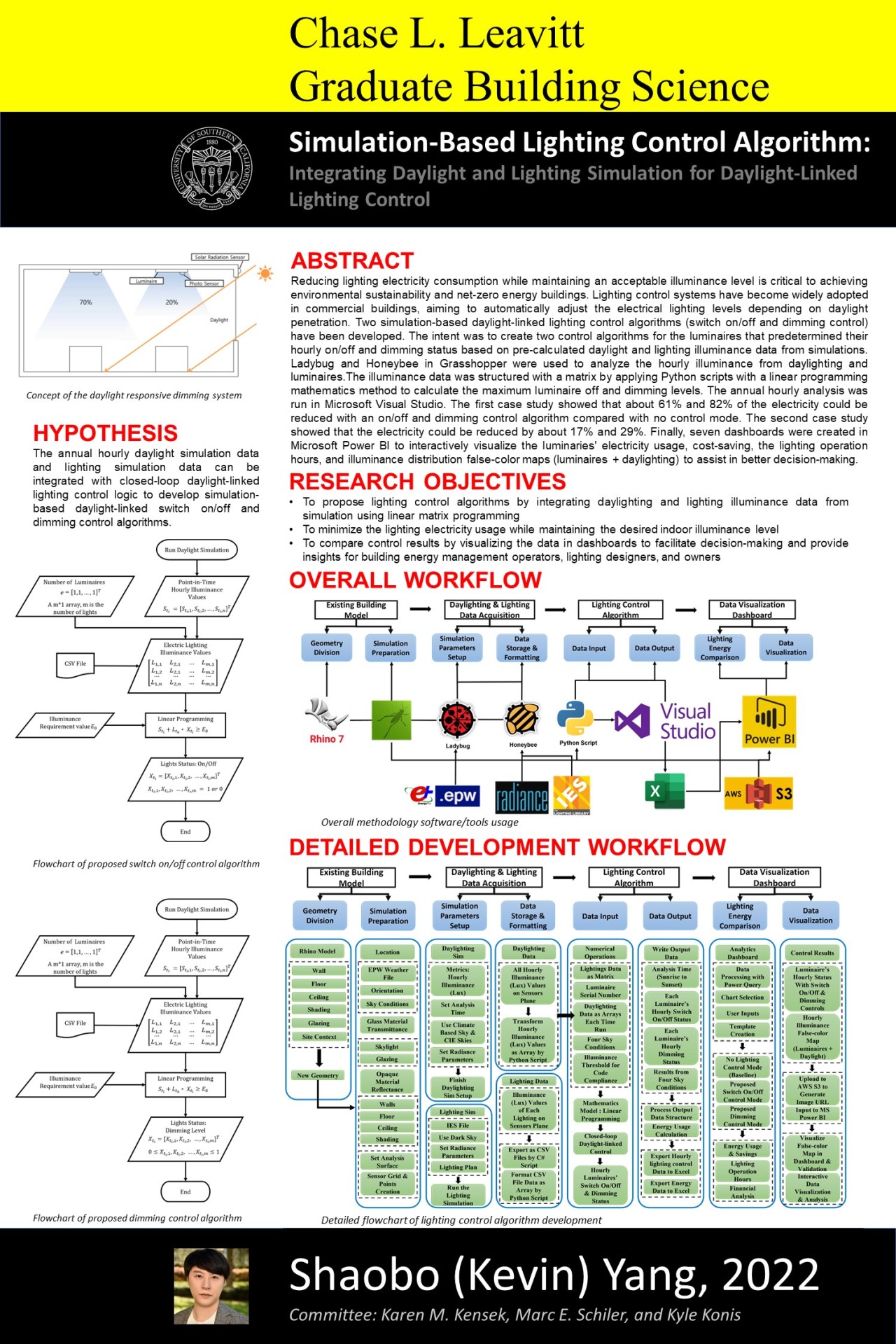Simulation-Based Lighting Control Algorithm: Integrating Daylight and Lighting Simulation for Daylight-Linked Lighting Control
Reducing lighting electricity consumption while maintaining an acceptable illuminance level is critical to achieving environmental sustainability and net-zero energy buildings. Lighting control systems have become widely adopted in commercial buildings, aiming to automatically adjust the electrical lighting levels depending on daylight penetration. Two simulation-based daylight-linked lighting control algorithms (switch on/off and dimming control) have been developed. The intent was to create two control algorithms for the luminaires that predetermined their hourly on/off and dimming status based on pre-calculated daylight and lighting illuminance data from simulations. Ladybug and Honeybee in Grasshopper were used to analyze the hourly illuminance from daylighting and luminaires. The illuminance data was structured with a matrix by applying Python scripts with a linear programming mathematics method to calculate the maximum luminaire off and dimming levels. The annual hourly analysis was run in Microsoft Visual Studio. Finally, seven dashboards were created in Microsoft Power BI to interactively visualize the luminaries’ electricity usage, cost-saving, the lighting operation hours, and illuminance distribution false-color maps (luminaires + daylighting) to assist in better decision-making.



